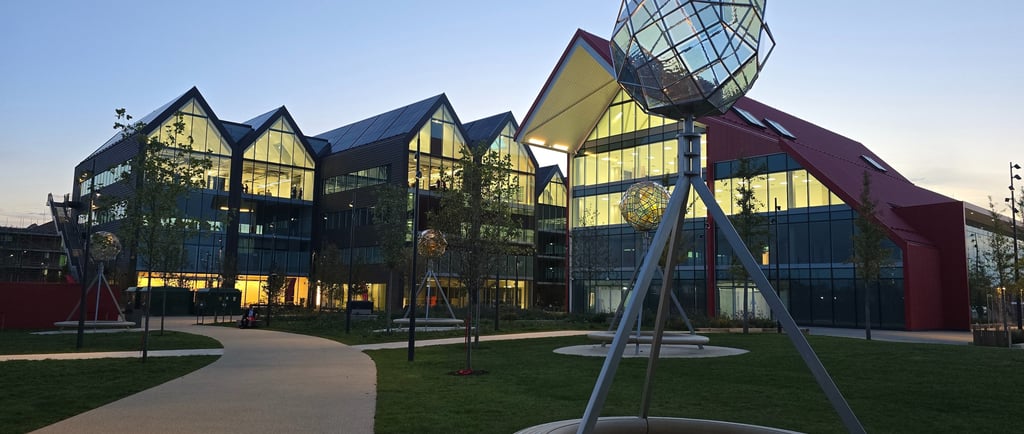Official Opening of Oxford North
10/2/20251 min read


The City of Dreaming Spires has a new addition to its iconic skyline
Mark and I were pleased to attend the launch of the Red Hall at Oxford North this week – a striking new building that has already become a landmark in the north of the city.
The Red Hall is the centrepiece of the £1.2bn Oxford North site, which has been described as a science, technology and innovation district. Its construction has dominated the skyline for the past two years and, with the ribbon cut by William Hague, Chancellor of Oxford University, it is now officially open.
Oxford North will eventually be home to a million square feet of laboratories and offices, alongside a public park and 480 homes. It promises to be a meeting point and launchpad for ambitious thinkers, with the potential to create over 4,500 jobs. The Red Hall itself, with its café and town-hall style space, will form the heart of the development.
In conversation at the launch, Louise Upton, Lord Mayor of Oxford, and I reflected that this particular triangle of land – bounded by the A34, A40 and A44 – now hosts three very different “developments”: the gleaming new science park, a BMW dealership, and Trax, the youth charity I visited just last week. On the face of it, they might seem worlds apart – science and innovation, commerce and consumerism, and community action with young people.
But perhaps this is also an invitation. The researchers and entrepreneurs of Oxford North could lend their expertise, mentoring and resources to the young people at Trax. A successful business like the dealership could provide apprenticeships, training and support. And the young people of Trax could, in turn, offer lived experience, energy and fresh perspectives that enrich both innovation and enterprise.
Oxford is a city of dreaming spires – but also of connection, collaboration and surprising juxtapositions. If the three developments on this small triangle of land find ways to support one another, then what happens here could be more than symbolic architecture: it could be a model of how our city grows stronger when we grow together.
The Oxfordshire Shrievalty
Championing justice and community across Oxfordshire
© 2025. All rights reserved.
